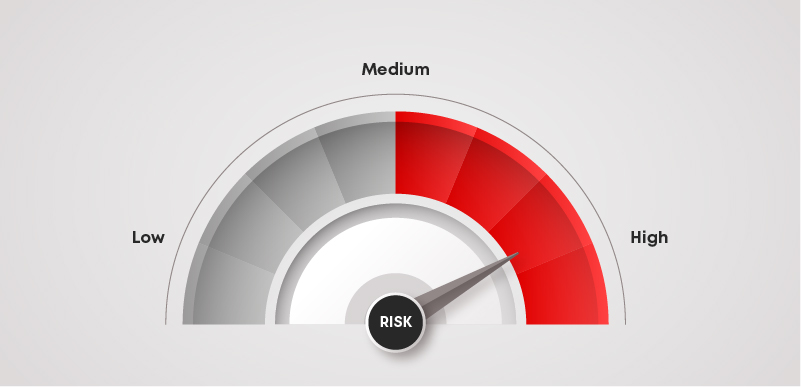Integrating KRIs and KPIs for comprehensive performance and risk management

Imagine a manufacturing plant aiming to maintain operational excellence while facing potential safety hazards every day. In such a scenario, tracking key performance indicators (KPIs) such as production efficiency and output is needed for assessing performance. However, without considering key risk indicators (KRIs) like workplace incidents or equipment failure rates, the plant may overlook critical safety concerns until they become costly disruptions or accidents.
Integrating KPIs and KRIs enables the plant to proactively manage both performance and risk and ensure smooth operations while prioritizing employee safety. Overall, this integration is essential for promoting ongoing improvement and awareness of risks within the organization.
The KPI Institute defines KPI as a measurable expression for the achievement of a desired level of results in an area relevant to the evaluated entity’s activity. KRI is a measure used to evaluate the likelihood of an event’s probability and consequences that could exceed the organization’s risk appetite and significantly harm the success of the organization.
While most organizations rely heavily on KPIs, rooted in historical data, these may offer limited insight into future threats. KRIs modify the narrative by beginning with a proactive framework for risk management and developing measurements around prospective pitfalls in the future.
Improving risk management
Utilizing both KPIs and KRIs would provide a more systematic approach to risk management compared to relying solely on KPIs. For instance, within the supply chain context, KRIs may cover aspects, such as supplier performance, reporting accuracy, and emerging industry trends. This gives the organization a clear picture of all possible hazards and enables it to foresee and handle issues before they have an adverse effect on operations. Here are the overarching benefits of using KRIs in risk management:
- Proactive identification: With KRIs, organizations can proactively detect potential risks before they occur. For example, by monitoring supplier performance to anticipate supply chain disruptions or analyzing industry trends to predict market shifts, organizations can minimize possible harm. This proactive approach enables early intervention and allows the organization to implement preventive measures.
- Root cause analysis: KRIs encourage delving deeper than immediate events to identify the underlying root causes behind potential risks. For example, rather than simply reacting to a decrease in supplier performance, KRIs can signal organizations to uncover the reasons behind it, whether due to internal issues, external market forces, or other factors. By addressing root causes, organizations can develop more effective risk management strategies and prevent similar issues from recurring in the future.
- Decisions based on data: Integrating risk assessment into current data streams allows organizations to make informed decisions in real-time. By leveraging KRIs and building alerts or other KRI-based solutions, organizations can access timely and pertinent information to guide decision-making processes. For instance, by monitoring relevant data points, such as financial indicators, organizations can quickly identify emerging risks and take appropriate actions to manage them. This allows organizations to be resilient and agile in the face of uncertainty.
Implementing KRIs
Organizations must understand the relationship between risk and performance to improve cross-functional collaboration and incorporate risk concerns into business decisions. For the integration to be successful, KRIs should be reported and communicated effectively. To create KRIs and corresponding mitigation plans, the individual who oversees the Enterprise Risk Management (ERM) process should work with the risk owners. The “risk owners,” who can effectively oversee their business units in line with their individual units’ risk goals, are the main benefactors of KRIs.
Risk owners must evaluate KRI data pertaining to risks that impact their units on a frequent basis. It is important to acknowledge that the different methods for reviewing KRI data also depend on an organization’s functions. In addition, successful identification and implementation of KRIs also requires a structured approach with the following key steps: identifying key metrics, assessing gaps, improving metrics, validating and setting trigger levels, and establishing a risk control plan.
Harnessing the power of KRIs alongside KPIs emphasizes the link between successful risk management and successful organization outcomes. This encourages a proactive attitude to risk, in which mitigating risk is viewed as an investment in accomplishing corporate objectives rather than as a cost.
For further insight into KPIs and KRIs, consider exploring The KPI Institute’s Live Online Certified KPI Professional and Live Online Certified OKR Professional courses.
*****************************
About the author
Nawaf Al Omari boasts over a decade of experience in optimizing teams and driving project management success. He excels at forecasting staffing needs, resource management, and fostering collaborations, with a 40% increase in stakeholder satisfaction. Prioritizing data-driven decision-making, he is adept at mitigating risks, tracking KPIs, and achieving cost reductions. Nawaf is strongly committed to delivering results and operational excellence.




